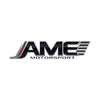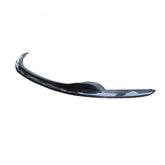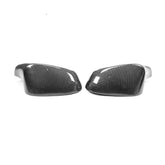Diving into the world of DIY suspension repairs can be a daunting yet rewarding endeavor. It's an opportunity to understand your vehicle better, save on repair costs, and gain the satisfaction of a job well done. Whether you're dealing with worn shocks, noisy struts, or sagging springs, tackling suspension repairs at home is within your reach. Here are essential tips and tricks to guide you through DIY suspension repairs, ensuring your vehicle returns to its optimal ride comfort and handling.

Safety First
Before you start, safety is paramount. Ensure your vehicle is securely lifted using a jack and stands rated for its weight. Never rely solely on a jack to support the vehicle while working underneath it. Wear safety glasses and gloves to protect against debris and sharp objects.
1. Diagnosing Suspension Issues
-
Visual Inspection: Begin with a thorough visual inspection. Look for signs of wear or damage on suspension components like springs, shocks, struts, and bushings. Rust, cracks, or leaks are clear indicators that parts need replacing.
-
Listen and Feel: Pay attention to unusual noises or changes in handling. Squeaks, rattles, or a rough ride can signal suspension problems. Note these symptoms to pinpoint areas needing attention.
2. Gathering the Right Tools
Having the right tools is crucial for a successful DIY suspension repair. Basic requirements include:
- A set of wrenches and sockets
- A torque wrench for proper bolt tightening
- Spring compressors for safely removing and installing springs
- Jack and jack stands for lifting and supporting the vehicle
3. Shock Absorbers and Strut Replacement
-
Preparation: Before removing anything, spray penetrating oil on bolts and fasteners to ease removal.
-
Procedure: Follow your vehicle's repair manual for the specific procedure to remove old shocks or struts. Use caution when compressing springs; improper handling can be dangerous.
-
Alignment: After replacing shocks or struts, a wheel alignment is often necessary to ensure proper handling and tire wear.
4. Replacing Bushings
Bushings absorb vibrations and shocks. Replacing worn bushings can significantly improve ride quality.
-
Removal: Bushings can be stubborn. Use a bushing press or make a DIY press with threaded rods, nuts, and washers. Apply heat carefully to ease removal if necessary.
-
Installation: Lubricate new bushings for easier installation. Ensure they're seated properly to avoid premature wear.
5. Handling Springs Safely
Replacing or upgrading springs can alter your vehicle's height and handling.
-
Spring Compressors: Always use a quality spring compressor when working with coil springs. This tool compresses the spring, allowing safe removal and installation.
-
Checking Alignment: Like with shocks and struts, check and adjust the alignment after changing springs to avoid uneven tire wear.
6. Anti-roll Bars for Improved Handling
Anti-roll bars reduce body roll during cornering. Upgrading or replacing worn components can enhance vehicle stability.
- Direct Swap: Replacing anti-roll bars is typically straightforward. Just unbolt the old and install the new, paying attention to bushings and links for signs of wear.
7. Regular Maintenance and Checks
Post-repair, regularly inspect your work for the first few miles. Listen for noises, feel for changes in handling, and re-check bolt torques to ensure everything remains secure.
A Journey of Learning and Improvement
DIY suspension repairs are a perfect blend of challenge and reward. With the right tools, careful preparation, and a patient approach, you can enhance your vehicle's performance from the comfort of your garage. Remember, the key to success lies in meticulous planning, adherence to safety protocols, and continuous learning. Welcome to the empowering world of the home mechanic, where every repair enriches your connection with your ride.










